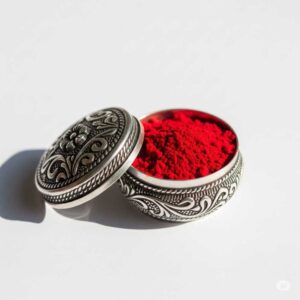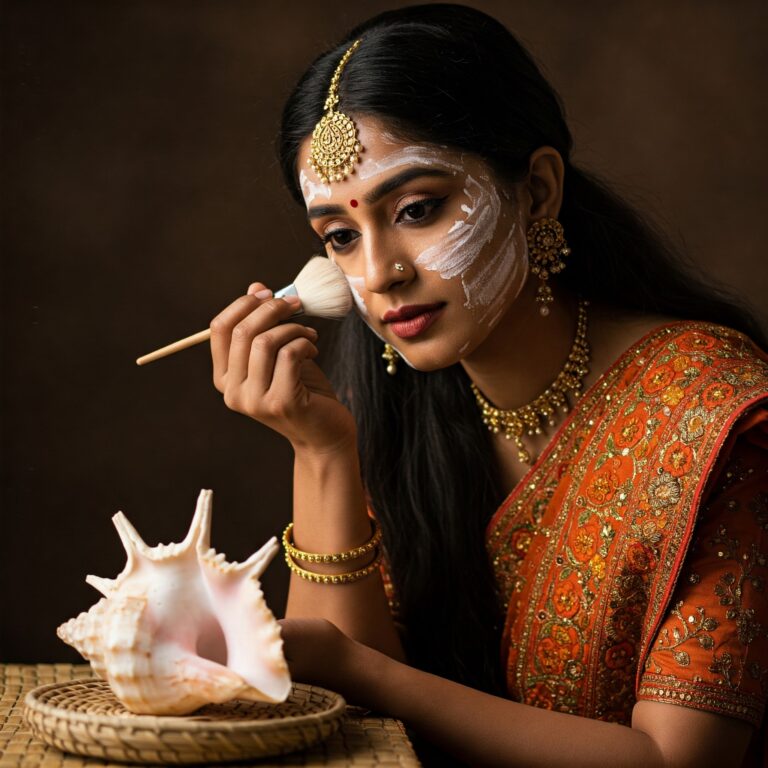In Indian culture, every object used in pooja carries deep spiritual meaning. One such sacred item is the sindur box, which holds sindur (vermilion) — a symbol of devotion, tradition, and divine energy. Whether you’re selecting a sindur box for daily rituals or festive occasions, choosing the right one is important for both aesthetic beauty and spiritual purpose.
This guide will help you understand the significance of sindur boxes, their types, materials, and what to consider before buying one for your pooja setup.
🌺 Why Sindur and the Sindur Box Matter in Pooja
Sindur, also known as vermilion or kumkum, holds a special place in Hindu rituals. It symbolizes energy, power, prosperity, and marital bliss. Applying sindur during pooja is believed to invoke divine blessings and positive vibrations in the household.
A sindur box is not just a container — it reflects sanctity, culture, and devotion. Keeping sindur in a clean, elegant, and spiritual vessel is part of traditional pooja etiquette.
🧿 Symbolic Importance of the Sindur Box
-
Purity – The box preserves the sacredness of the sindur.
-
Aesthetics – Often artistically crafted, it enhances the pooja space.
-
Devotion – A dedicated box shows respect toward the rituals and deities.
-
Tradition – Passed down through generations, it carries cultural value.
🪙 Popular Materials Used in Sindur Boxes
The material of a sindur box affects its appearance, durability, and spiritual value. Here are common types:
1. Brass (Pital)
-
Significance: Brass is considered a sattvic (pure) metal in Hindu traditions.
-
Advantages: Durable, long-lasting, easy to clean.
-
Look: Traditional golden shine with antique charm.
2. Silver (Chandi)
-
Significance: Associated with purity and Lakshmi (goddess of wealth).
-
Advantages: Elegant, auspicious, valuable.
-
Look: Polished, white metallic shine.
3. Wood
-
Significance: Earthy and eco-friendly.
-
Advantages: Lightweight, handmade, budget-friendly.
-
Look: Carved or painted with intricate designs.
4. Marble
-
Significance: Represents purity and elegance.
-
Advantages: Easy to clean, looks luxurious.
-
Look: Smooth, white, often painted with traditional motifs.
5. Terracotta or Clay
-
Significance: Symbolizes earth and tradition.
-
Advantages: Affordable, organic.
-
Look: Rustic and handcrafted feel.
🪷 Types of Sindur Boxes Based on Design
1. Single Compartment Box
-
Ideal for simple, daily pooja.
-
Compact and easy to handle.
2. Twin Box or Kumkum-Diya Combo
-
Combines sindur and haldi containers.
-
Some even have a small oil lamp attached.
3. Designer Decorative Box
-
Richly designed with stones, beads, and enamel work.
-
Perfect for gifting or festive occasions.
4. Temple-Style Lid Boxes
-
Often shaped like a temple dome or lotus.
-
Enhances spiritual aesthetics.

🛍️ Tips to Choose the Perfect Sindur Box
-
Purpose: For daily pooja, go for simple brass or wooden boxes. For special occasions or gifts, choose silver or marble options.
-
Size Matters: Small sizes are handy for everyday use, while larger ones are suitable for community rituals or temple use.
-
Ease of Use: Make sure the lid opens smoothly and securely. Some boxes come with inner lining to prevent spillage.
-
Cleanliness: Choose a material that’s easy to clean and maintain. Brass and silver are good options.
-
Design Match: Pick a style that complements your pooja room setup.
-
Budget: Wooden and terracotta are more affordable, while silver and marble are premium.
-
Spiritual Belief: If you follow Vaastu or specific spiritual practices, pick metals and shapes that align with your beliefs.
🛒 Where to Buy Authentic Sindur Boxes
At www.mayapuri.com, we offer a handpicked collection of authentic, traditional sindur boxes crafted by Indian artisans. From pure brass to hand-painted wooden designs, each piece reflects our deep commitment to devotion, purity, and heritage.
Look for:
-
✅ Ethically sourced materials
-
✅ Handcrafted spiritual artistry
-
✅ Affordable and premium options
-
✅ Packaging suitable for gifting
🎁 Sindur Box as a Spiritual Gift
A sindur box makes a thoughtful and meaningful gift, especially:
-
During weddings
-
On Karva Chauth or Teej
-
As return gifts for pooja functions
-
During Navratri or Durga Puja
-
For new brides and griha pravesh ceremonies
It’s not just a gift, but a blessing of prosperity and protection.
🧘♀️ Care & Maintenance Tips
-
Clean brass boxes with a mixture of lemon and salt to retain shine.
-
Use a soft cloth for silver to avoid scratches.
-
Keep marble and wooden boxes away from moisture.
-
Store sindur in a cool, dry place to retain its color and purity.
✨ Final Thoughts
Choosing the right sindur box is a small yet important part of maintaining sanctity in your pooja practices. Whether you prefer the traditional appeal of brass or the elegance of silver, the key is to pick a box that resonates with your devotion and daily rituals.
Remember, in pooja, every detail matters — even the humble sindur box holds the power to bring divine energy and blessings into your home.
Explore devotional products and spiritual blogs at 👉 www.mayapuri.com


